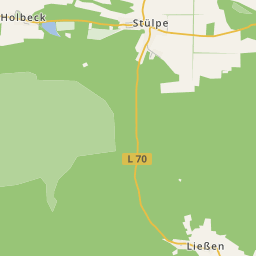












Luckenwalde was nearly completely depopulated during the 30-Year War through destruction and illnesses. To counteract this Prussia recruited crafts people. They got numerous privileges. This was also benefiting Luckenwalde.In the beginning the settlements grew in the old town boundaries. After this the Heidestraße and the Rudolf-Breitscheid-Straße was built for the Zinnaer suburb.
Attracted by the Prussian weavers further craftsmen and their families followed. The present Käthe-Kollwitz-Straße, the Kleine and the Große Weinbergstraße were built for them as well as the Ziegelstraße.Altogether 123 colonist houses were constructed till 1790. They were home as well as workshop. The Prussian King Frederick the Great signed in 1782 the concession for the construction of the 'Great Factory' and so the rise to a industrial town started for Luckenwalde.
Originally the weaving and spinning was done in home-work. But then the operator of the 'Great Factory' dictated the prices. The craftsmen were not able to sustain this and were taken on as wage labourer.As both suburbs were situated outside of the former Luckenwalde, the citizens had no civil rights. The masters had to swear a citizen oath for their journeymen and other cohabitants before the Luckenwalde mayor.At the end of the 19th century Luckenwalde wanted to become a big city and so the appearance of the suburbs also changed. Parts of the old weaver houses were pulled down or redeveloped so that their original appearance was not to be recognised.